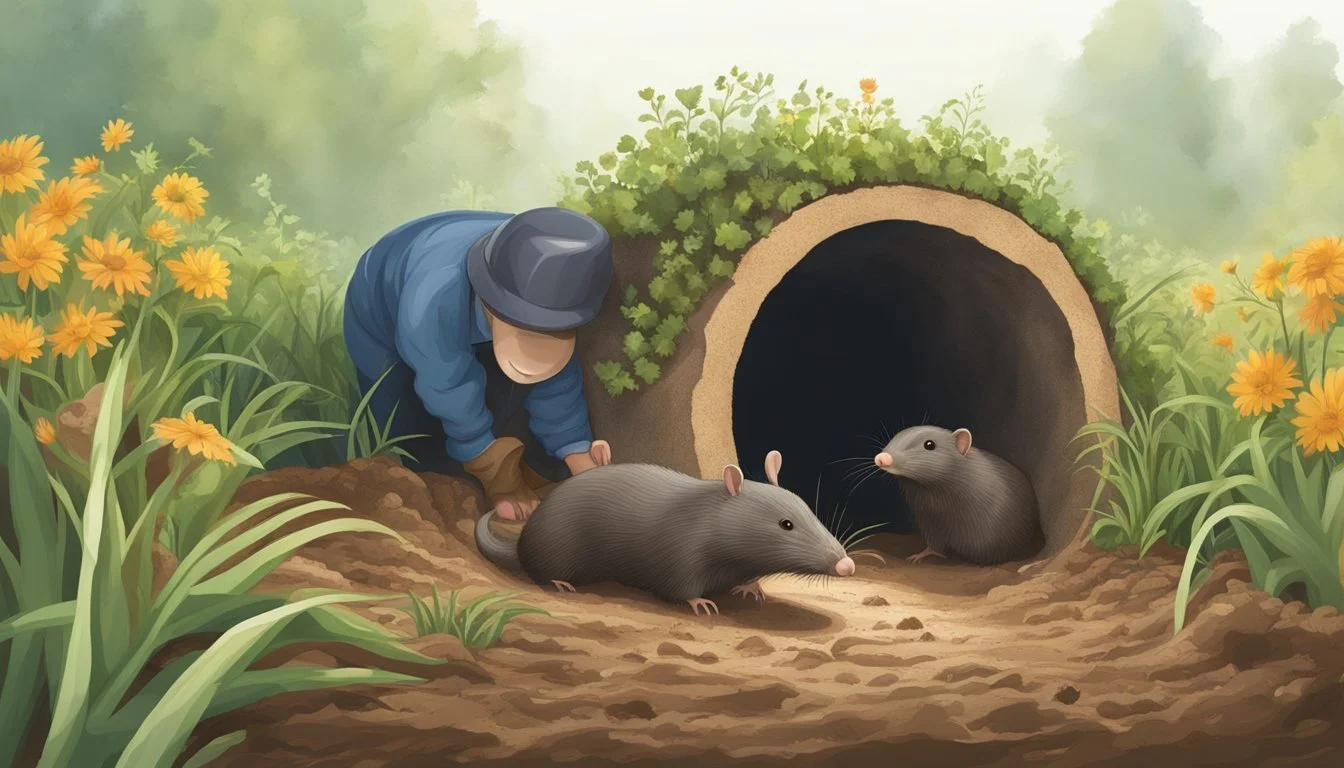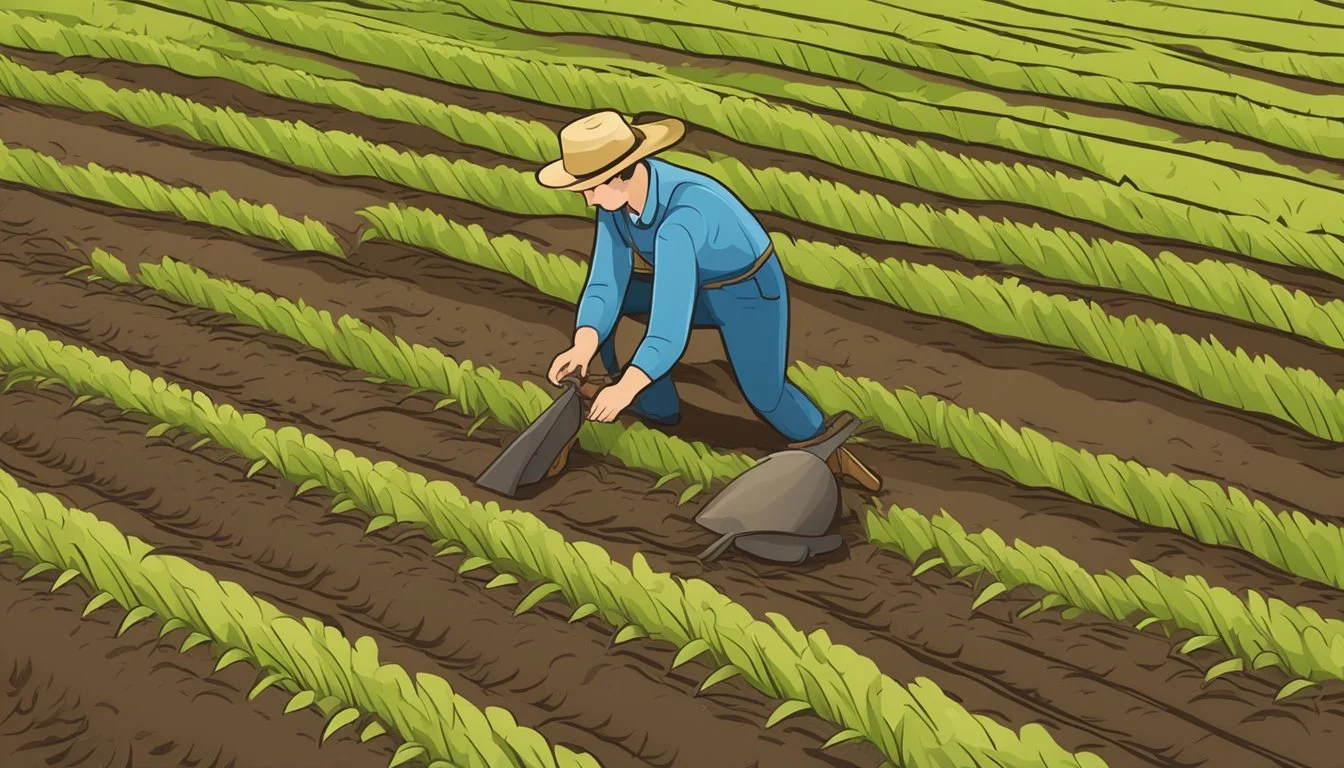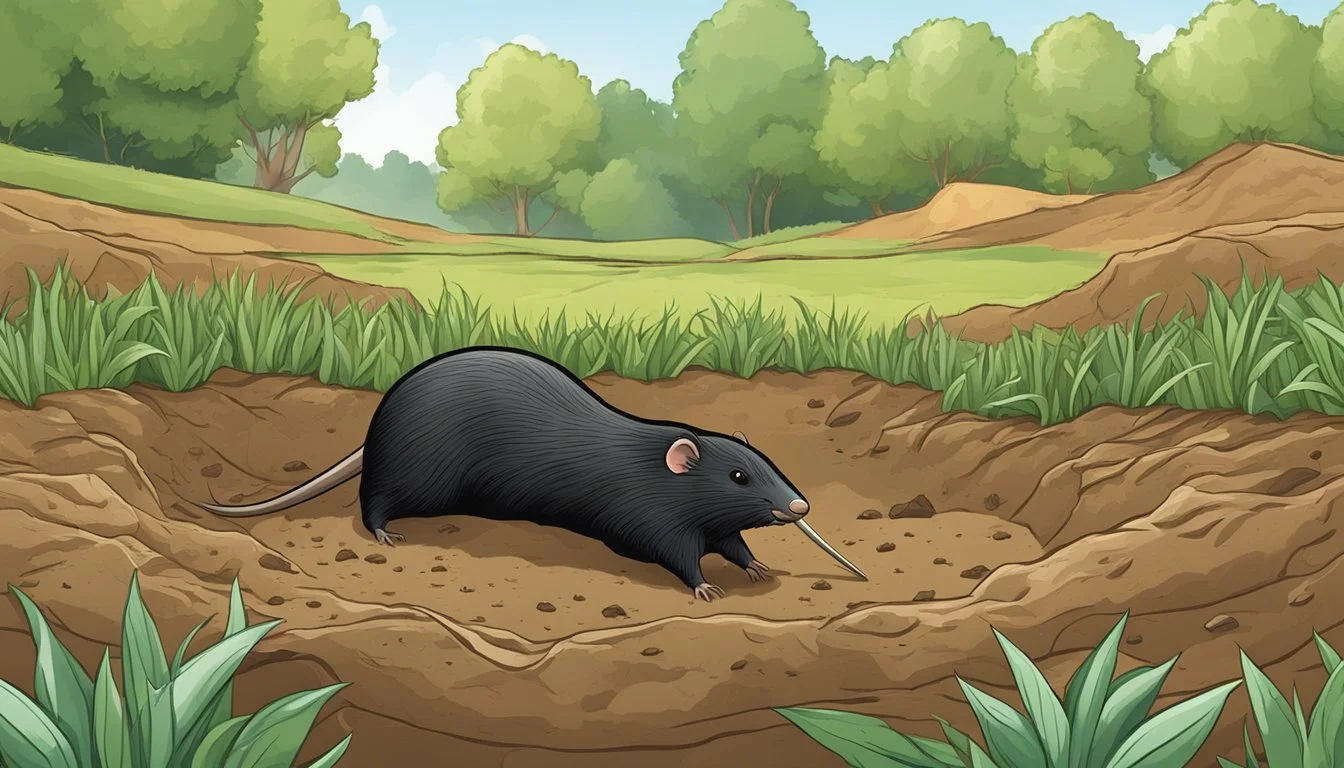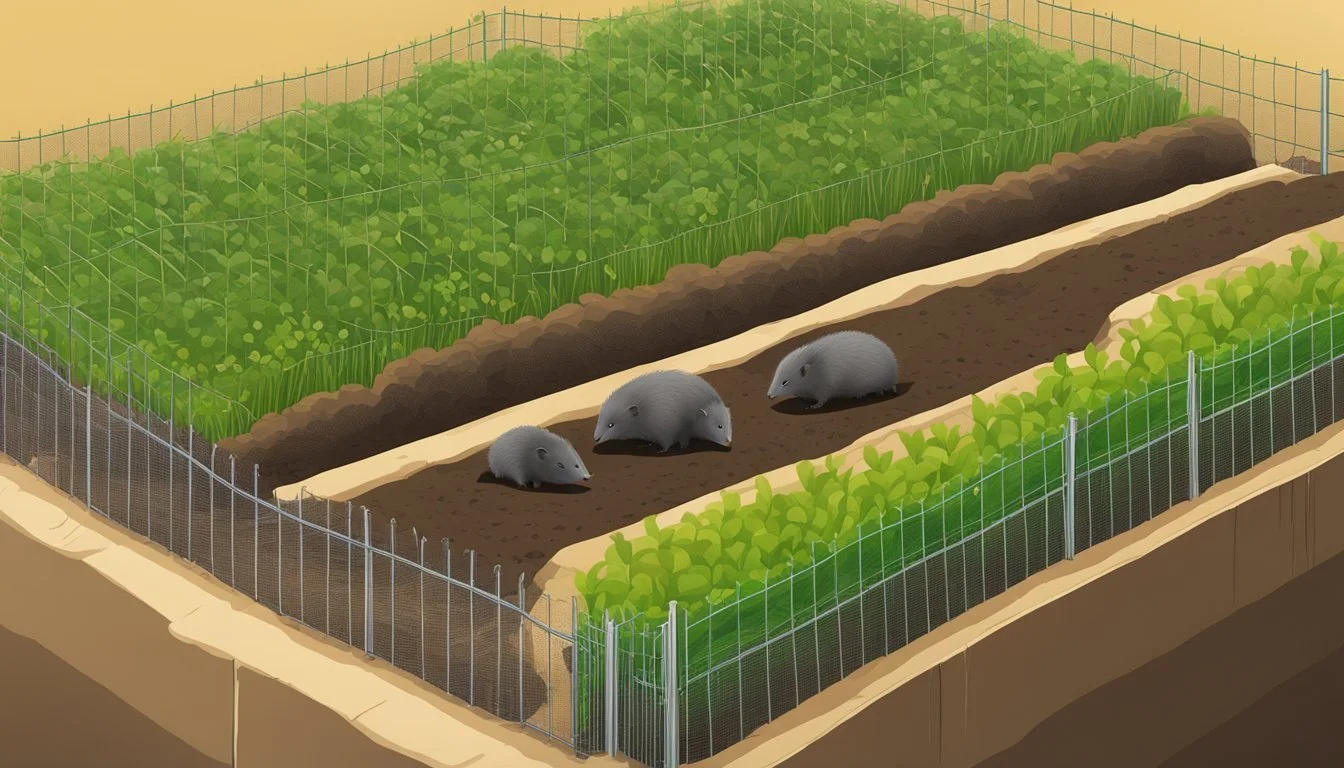Protecting Crops from Eastern Mole
Effective Strategies for Your Garden
Eastern moles, a common North American variety, pose a significant challenge for farmers and gardeners looking to protect their crops. These small mammals are known for their underground tunneling activities which can lead to extensive damage to root systems, ultimately affecting plant health and crop yields. Understanding the behaviors of the eastern mole is crucial for developing effective strategies to mitigate their impact on agricultural areas.
Addressing mole damage requires a multifaceted approach that considers the mole's natural diet and habitat preferences. Their diet mainly consists of insects such as beetle larvae, earthworms, and ants; therefore, measures that target these food sources can indirectly influence mole activity. Physical barriers, soil treatments, and thoughtful landscaping can play pivotal roles in protecting crops from these subterranean foragers.
Implementing practical and eco-friendly measures not only helps in controlling mole populations but also contributes to the sustainability of agricultural practices. Agriculture professionals and landowners must leverage their knowledge of mole behavior alongside proven, humane control methods to defend their crops effectively against the disruptions caused by the eastern mole.
Understanding the Eastern Mole
To protect crops effectively from the Eastern mole, it is essential to understand its physical attributes, habitual behavior, dietary preferences, biological aspects, and how it compares to other mole species.
Physical Characteristics
The Eastern mole (Scalopus aquaticus) is a small mammal with velvet-like fur that ranges in color from gray to brown. An adult's body length is generally between 4 to 6 ½ inches, and it weighs around 3 to 5 ounces. Unique features include a long naked snout, and front paws that are broadened and shovel-like, adept for burrowing through soil.
Behavior and Habitat
These moles are active year-round, both day and night, and are rarely seen above ground. Their burrowing habits are driven by the search for food and mates, and they create extensive tunnel systems. The Eastern mole prefers moist loamy soils where tunnelling is easier but can navigate through less conducive soils when necessary. They are known to have highly territorial instinct with a defined home range.
Diet and Feeding Patterns
As insectivores, Eastern moles have a diet primarily consisting of earthworms, grubs, and ants. They require a large amount of food, nearly equivalent to 100% of their body weight each day to support their energy-intensive lifestyle.
Mole Biology
Most mole species, including the Eastern mole, have a gestation period of about 4 to 6 weeks. The offspring are born in underground burrows and are weaned off in approximately a month. The animal's biology, particularly the high-energy demands for its burrowing activities, directly influences these moles' feeding patterns and habitat preferences.
Comparison with Other Mole Species
The Eastern mole is often compared with species such as the star-nosed mole and hairy-tailed mole. The star-nosed mole is recognizable by its unique star-shaped nose used to detect food, and it also resides in wetter soils. The hairy-tailed mole, distinguishable by its hairy tail, prefers dry soils and is more commonly found in forested regions. All of these species show unique physical and behavioral adaptations to their environments.
Identifying Mole Activity
In agricultural settings, efficient identification of mole activity is crucial to protecting crops from potential damage. Awareness of the distinct indicators can facilitate early intervention.
Signs of Mole Presence
Moles leave recognizable traces as they burrow through soil in search of food. The primary indicators include:
Raised Ridges: Continuous lines of slightly elevated earth, marking the paths of mole tunnels.
Visible Tunnels: Large areas of loose soil may appear due to the extensive subterranean network created by moles.
Holes in the Ground: Entry and exit points to the mole's underground burrow system, often surrounded by mounded earth.
Mole Damage to Crops
Mole activity can have detrimental effects on agricultural crops, specifically due to:
Root Damage: Moles indirectly damage plant roots as they dig, which can interfere with crop yields.
Wilting Plants: Damaged roots may struggle to deliver nutrients effectively, resulting in wilting plants.
Disruption of Soil: The creation of mole burrows can affect soil stability and moisture content, further endangering plant health.
Mole Behavior Throughout the Seasons
Understanding the seasonal behavior of Eastern moles is crucial for protecting crops. These animals remain active year-round, but their activity levels and patterns change with the seasons, affecting how they interact with their environment and, consequently, your land.
Spring Activity
During spring, as the soil softens, moles become notably more active. This season is marked by increased digging as moles create both surface tunnels and feeding tunnels in search of earthworms and other insects that are abundant during this time. The health of the soil can facilitate their movement, making spring a critical period for mating and searching for mates, which implies a potential increase in the mole population and subsequent tunneling activity.
Summer Patterns
Summer witnesses sustained mole activity, with animals continuing to maintain and expand their active tunnels to pursue their diet mainly comprised of invertebrates located deep within the ground. Surface tunnels may be less evident during this period as the mole prefers cooler soil deeper underground. Gardeners may notice more mounded ridges and raised areas indicating mole presence.
Fall and Winter Behavior
In fall, moles prepare for the colder months, which may involve the creation of new tunnels and a push to store more food. As temperatures drop, their surface activity tends to diminish, and they move deeper into the ground. However, even through winter, Eastern moles do not hibernate and remain active year-round, continuing their digging and foraging, albeit at a reduced pace. It's important to consider local laws governing mole control before implementing any management strategy during this season.
Effective Mole Control Techniques
When considering ways to protect crops from Eastern moles, various techniques have been proven to be effective. From trapping to biological strategies, the key lies in understanding and implementing these methods correctly.
Trapping Methods
Trapping is a reliable and direct method of mole control. The most effective traps include the harpoon, scissor-jaw, and choker loop, which are designed to target moles in active tunnels. Success rates with trapping are greatest in the spring and fall, particularly after rain, when moles come closer to the surface. Traps should be placed in straight active runs or near the entrance to a deep feeding tunnel.
Chemical Controls
Chemical controls are another aspect of mole management. These include fumigants and toxicants such as Talpirid and bromethalin-based products like Moletox baited gel or Tomcat Mole Killer. These chemical baits mimic the mole's natural food and, when placed effectively in the mole tunnels, can reduce mole activity. Care must be taken to follow all label instructions and safety precautions, as misuse can harm non-target species and the environment.
Alternative Mole Repellents
For those looking for non-lethal options, natural repellents can be an appealing choice. Planting certain crops like marigolds or strong-scented herbs such as mint and rosemary may deter moles due to their dislike of strong odors. Additionally, commercial repellents that use castor oil can create an unpleasant environment for moles, therefore encouraging them to move elsewhere.
Cultural Practices
Maintaining soil health and proper lawn and garden care can serve as a cultural tactic in mole control. Techniques such as crop rotation can disrupt the food supply for moles, discouraging their presence. For lawns, minimizing overwatering can reduce the abundance of grubs and worms that attract moles.
Biological Control Strategies
Predators and natural enemies play a critical role in controlling mole populations. Introducing or encouraging the presence of natural predators like snakes, owls, and hawks can aid in managing mole numbers. For ground-level control, fostering habitats for predators that hunt moles, such as cats and dogs, can also be beneficial. However, this approach does not guarantee complete mole eradication and should be viewed as a complementary strategy.
Legal and Environmental Considerations
When addressing the issue of controlling the Eastern mole, it is crucial to understand both the legal framework that governs wildlife management and the environmental impact that moles have on soil and ecosystems. Compliance with regulations ensures legal control measures, while considering the moles' ecological role helps maintain soil health.
Regulations on Mole Control
Local and state laws dictate the acceptable methods for mole control. It is essential to adhere to the legal guidelines that relate to trapping and the use of toxins, ensuring that one's pest control strategies are not only effective but also within legal bounds. For instance, some areas might permit the use of traps, while others may have restrictions or licensing requirements for using toxicants and fumigants. Compliance with these laws is critical to avoid penalties.
Impact on Soil and Ecosystem
Moles play a significant role in maintaining soil health by aerating it and mixing deeper soils with surface materials. However, their tunneling can occasionally damage plant roots, leading to challenges for farmers and gardeners. When controlling moles, one should take into account their ecological role, as their presence benefits the soil structure and therefore the broader ecosystem. Effective mole management should balance the need to protect crops with the importance of preserving wildlife and preventing unnecessary harm to the environment.
Preventing Future Mole Infestations
To safeguard agricultural land against mole damage, it's essential to implement effective long-term strategies and maintain vigilant monitoring. Employing a combination of methods can control mole populations and prevent the recurrence of their damaging activity.
Long-Term Prevention Strategies
Habitat Modification: Altering the environment can discourage moles from establishing their habitat near crops. This may involve removing their food sources such as grubs and worms through biological control methods. Furthermore, installing physical barriers like underground fences can provide a robust deterrent to mole activity.
Repellents: The use of repellents is a non-lethal approach to managing mole populations. For example, castor oil-based repellents have been noted for their effectiveness in certain scenarios. These should be applied following the manufacturer's instructions to ensure optimal results.
Regular Monitoring and Maintenance
Identify and Respond: Regular inspection of the farmland is vital for early detection of mole activity, which is characterized by raised ridges and mounds. Once identified, quick action should be taken to address the issue. This might involve reapplying repellents or repairing barriers to mitigate further mole damage.
Persistence: Achieving a mole-free farm requires patience and continuous effort. Control methods should be regularly evaluated for their efficacy, and adjustments to the strategy should be made as necessary. Over time, these persistent efforts will lead to an environment less conducive to moles and more beneficial for the crops.
Frequently Asked Questions
Protecting crops from damage caused by Eastern moles requires a strategic approach, combining various deterrents and control methods tailored to agricultural settings.
How can farmers deter moles from damaging their crops?
Farmers may employ several tactics to deter moles, such as cultivating crops that moles find unattractive and maintaining soil conditions that are less appealing to these pests. Creating an unfavorable environment minimizes mole activity near crops.
What methods are effective for mole control in agricultural areas?
Effective methods for mole control include trapping, habitat modification, and sometimes the use of repellents or fumigants. Each method should be used in accordance with local regulations and sustainability practices.
Which repellents are known to be disliked by moles and can keep them away from crops?
Certain plants like marigolds and strong-scented herbs such as mint and rosemary are known to be disliked by moles and can serve as natural repellents when planted near crops.
What are the recommended trapping techniques for moles in farmlands?
Setting proper traps, such as harpoon traps, in active tunnels can be an effective way to manage moles. Trapping requires regular monitoring and knowledge of mole behavior to ensure success.
What physical barriers can be established to prevent mole activity in crop fields?
Physical barriers like underground fences made from hardware cloth can prevent moles from entering crop fields. Barriers should be installed deep enough to inhibit moles from tunneling underneath.
How long is the lifespan of moles, and does it affect crop protection strategies?
The lifespan of moles, typically 3 to 5 years, impacts crop protection strategies as it informs the duration of control efforts. Long-term solutions and periodic reassessment are necessary given their reproductive rates and annual offspring production.









